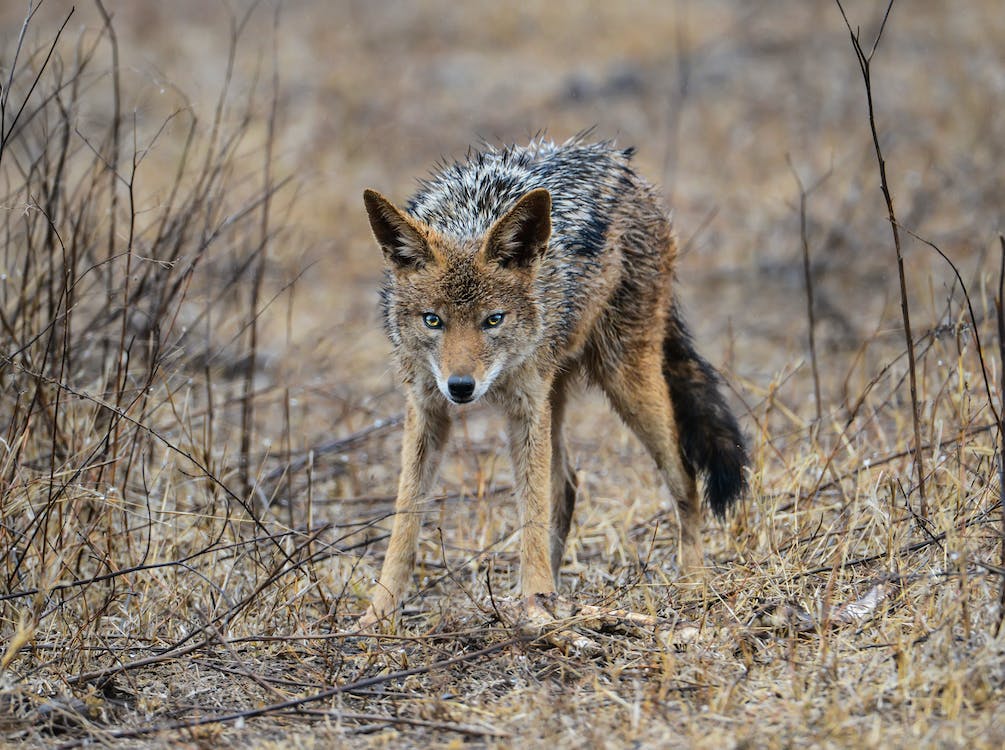Community
Massachusetts officials warn pet owners as coyote dispersal season has begun

BOSTON – Massachusetts officials warn pet owners and residents as coyote dispersal season has begun.
According to police and Mass Wildlife, pups leave their families to start a new life on their own in the fall leaving increased activity through November. Keep dogs on a short leash, cats indoors.
This is the time of year when young coyotes may choose to disperse and leave the family pack in search of their own territory. Not only will sightings increase at this time, but also, some different behaviors such as seeing one in your yard when you normally don’t or being followed by one. These young ‘yotes are curious and are figuring out where they belong and how to get by.
The eastern coyote is a medium-sized predator, it is an opportunistic feeder and extraordinarily adaptable to a wide range of habitats. Coyotes thrive in suburban, urban, and rural areas. They will utilize whatever food is naturally available, including small animals, birds, insects and fruits, as well as artificial sources such as garbage, pet food, birdseed, and compost.
The eastern coyote resembles a medium-sized dog in body size and shape, but has longer, denser fur and pointed, erect
ears. The tail is long, black-tipped, and bushy. Typical coat color is a grizzled gray but can vary from creamy blonde to
red or nearly solid black. Typical weights for females are 33–40 pounds, while males typically weigh 34–47 pounds.
A very large male may weigh in the neighborhood of 60 pounds, but such an animal is exceptional. Coyotes often look heavier than they are because of their thick fur.
Coyotes can thrive close to humans in suburban and urban areas. They require only a source of food, water, and
cover. If you want to make your property less attractive to coyotes and avoid having any problems with these
predators, follow these basic practices from Mass Wildlife. Remember, share these tips with your neighbors; your efforts will be futile if neighbors provide food or shelter for coyotes.
DON’T FEED OR TRY TO PET COYOTES: Keep wild things wild! Feeding, whether direct or indirect, can cause coyotes to act tame and may lead to bold behavior. Coyotes that rely on natural foods remain wild and wary of humans.
SECURE YOUR GARBAGE: Coyotes raid open trash materials and compost piles. Secure your garbage in tough plastic containers with tight fitting lids and keep them in secure buildings when possible. Take out trash when the morning pick up is scheduled, not the previous night. Keep compost in secure, vented containers, and keep barbecue grills clean to reduce attractive odors.
KEEP BIRD FEEDER AREAS CLEAN: Use feeders designed to keep seed off the ground, as the seed attracts many small mammals coyotes prey upon. Remove feeders if coyotes are regularly seen around your yard.
CLOSE OFF CRAWL SPACES: Coyotes will use areas under
porches and sheds for resting and raising young. Close these
areas off to prevent animals from using them.
DON’T LET COYOTES INTIMIDATE YOU: Don’t hesitate to scare or threaten coyotes with loud noises, bright lights, or water sprayed from a hose.
CUT BACK BRUSHY EDGES: These areas provide cover for coyotes and their prey.
PROTECT LIVESTOCK AND PRODUCE: Coyotes will prey on livestock. Various techniques, such as fencing, will protect livestock from predation. Clear fallen fruit from around fruit trees.
PET OWNERS: Although free roaming pets are more likely to be killed by automobiles than by wild animals, coyotes do view cats and small dogs as potential food, and larger dogs as competition. For the safety of your pets, keep them leashed at all times. Additionally, feed your pets indoors. Outdoor feeding can attract many wild animals.
About this time last year, 2 two-year-olds were attacked by a coyote in Massachusetts.
-

 Community6 years ago
Community6 years agoNational Shrine of La Salette Festival of Lights 2017 set to begin
-

 Community6 years ago
Community6 years agoMassachusetts State Police looking for good home for retired dogs
-

 Crime6 years ago
Crime6 years agoFall River ranked most dangerous city in Massachusetts according to report
-

 latest6 years ago
latest6 years agoDurfee student allegedly overdoses on marijuana
-

 Community6 years ago
Community6 years agoVideo of Fall River Police goes viral
-

 Causes6 years ago
Causes6 years agoMissing Fall River woman found deceased
-

 Crime6 years ago
Crime6 years agoFall River Police add names to most wanted list
-

 Causes6 years ago
Causes6 years agoFall River teenager reported missing has been found





